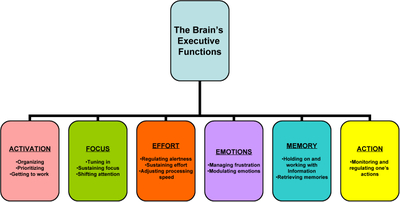Attention Deficit Disorder and Executive Functioning
“Not to have control over the senses is like sailing in a rudderless ship, bound to break to pieces on coming in contact with the very first rock.”
–Mahatma Gandhi (Indian Nationalist and World Teacher, 1869-1948)
The Mahatma’s statement could apply to most people stuggling with attention deficit disorder.
There is an important idea in neurology and psychology called “Executive functioning.” This refers to our ability to be able to make and carry out plans, direct our attention, focus and also to control our internal states: our impulses and emotions and to be able to switch from one task to another. In other words it is a key part of our ability to self-regulate our behavior, mind and emotions.
Most evidence now indicates that executive function is mediated by the regions of the dorsolateral prefrontal cortex. It happens that these same regions are amongst those that seem to undergo beneficial changes in people who practice meditation.
For people interested in attention deficit disorder, I’d like to recommend a book, “Attention Deficit Disorder: The Unfocused Mind in Children and Adults,” by Thomas E. Brown. In the book he encapsulates some up-to-date research indicating that one way of conceptualizing some of the difficulties faced by people with attention deficit disorder, is to break them down into the six major “domains” of executive functioning:
- Activation: Organizing, prioritizing and getting to school or work
- Focus: Tuning in, maintaining focus and shifting attention
- Effort: Sustaining effort, regulating alertness and adjusting processing speed
- Emotions: Modulating emotions and managing frustration
- Memory: Holding and manipulating information and retrieving memories
- Action: Monitoring and regulating actions
It can be very helpful for people to understand why they face the problems that they do, and how each may be amenable to a different type of help.
What we have done below is to re-draw and slightly simplify an extremely helpful diagram from Dr. Brown’s book, that will make it easier for you to see that kind of problems you or a loved one may be facing, and how treatment and coping strategies will be directed toward whichever of these is causing the most trouble in a person’s life.
(You can click on the diagram to see a large version of it.)







